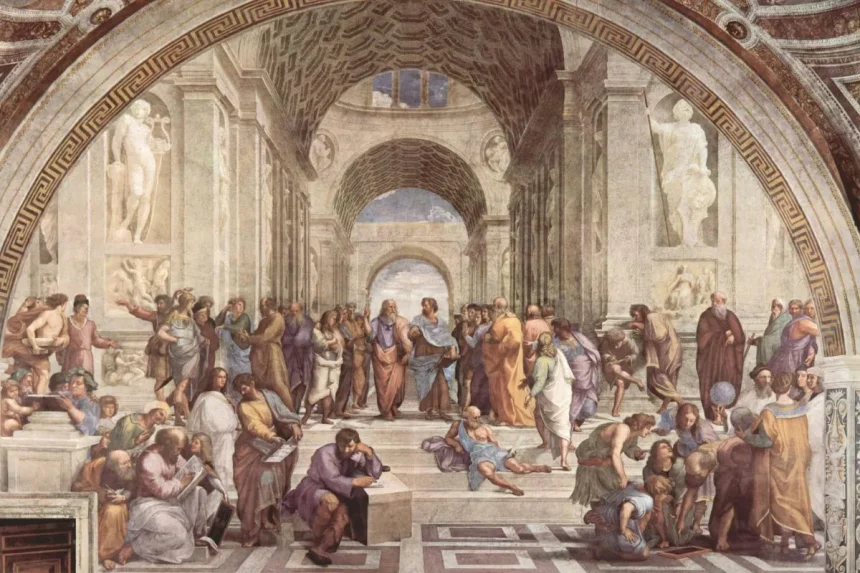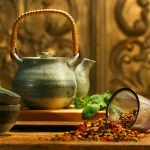The Renaissance, derived from the French word for “rebirth,” signifies a period of profound cultural, artistic, and intellectual awakening that swept across Europe between the 14th and 17th centuries. This golden age marked the transition from the medieval era to the modern world, characterized by a revival of classical learning, a flourishing of the arts, and significant advancements in science and philosophy. Today, the Renaissance remains one of the most celebrated and studied periods in human history, inspiring countless generations and leaving an indelible mark on the arts and culture. In this blog, we will delve into the essence of the Renaissance, exploring its origins, key figures, artistic achievements, and enduring legacy.
Origins of the Renaissance: A Cultural Awakening
The seeds of the Renaissance were sown in Italy, particularly in the vibrant city-states of Florence, Venice, and Rome. The late medieval period was marked by economic stagnation, political turmoil, and the devastating impact of the Black Death. However, by the 14th century, Italy began to experience a resurgence in economic and cultural activity, setting the stage for an unprecedented era of creativity and innovation.
Several factors contributed to the emergence of the Renaissance:
- Economic Prosperity: The rise of wealthy merchant families, such as the Medici in Florence, provided the financial support necessary to commission works of art and fund scholarly pursuits. Trade and commerce flourished, leading to increased wealth and the patronage of the arts.
- Rediscovery of Classical Texts: The fall of Constantinople in 1453 led to an influx of Greek scholars and ancient manuscripts into Italy. The renewed interest in the writings of classical authors like Plato, Aristotle, and Vitruvius fueled a revival of classical learning and inspired a new humanist philosophy.
- Humanism: Humanism, a central intellectual movement of the Renaissance, emphasized the value of human potential and achievement. Humanists believed in the importance of studying classical texts, not just for their intellectual content but also for their moral and practical guidance. This shift in perspective encouraged a more secular and individualistic approach to life and art.
- Technological Innovations: The invention of the printing press by Johannes Gutenberg in the mid-15th century revolutionized the dissemination of knowledge. Books became more accessible, literacy rates increased, and ideas spread rapidly across Europe, facilitating the cultural exchange that defined the Renaissance.
Key Figures of the Renaissance: Masters of Art and Thought
The Renaissance produced a remarkable array of artists, thinkers, and innovators whose contributions have shaped the course of history. Their works continue to captivate and inspire audiences worldwide. Here, we highlight some of the most influential figures of this extraordinary period.
- Leonardo da Vinci (1452-1519) Leonardo da Vinci is often hailed as the quintessential Renaissance man, embodying the ideal of a polymath whose genius spanned multiple disciplines. As a painter, sculptor, architect, engineer, and scientist, Leonardo’s insatiable curiosity and boundless creativity resulted in some of the most iconic works of art, including “The Last Supper” and “Mona Lisa.” His notebooks, filled with detailed sketches and scientific observations, reveal a mind that sought to understand and depict the intricacies of the natural world.
- Michelangelo Buonarroti (1475-1564) Michelangelo’s mastery of sculpture, painting, and architecture earned him a place among the greatest artists of all time. His sculptures, such as “David” and “Pieta,” showcase his unparalleled ability to convey human emotion and physical perfection. Michelangelo’s work on the Sistine Chapel ceiling, particularly “The Creation of Adam,” remains one of the most awe-inspiring achievements in the history of art. His later architectural work on St. Peter’s Basilica in Rome further cemented his legacy.
- Raphael Sanzio (1483-1520) Raphael, known for his harmonious compositions and graceful figures, was a master painter and architect. His frescoes in the Vatican, especially “The School of Athens,” exemplify the ideals of the Renaissance, blending classical themes with a celebration of human intellect and creativity. Raphael’s ability to capture the beauty and serenity of his subjects made him a favorite among patrons and contemporaries alike.
- Dante Alighieri (1265-1321) Although Dante predates the Renaissance, his epic poem “The Divine Comedy” profoundly influenced Renaissance literature and thought. Dante’s exploration of the human condition, his vivid portrayal of the afterlife, and his use of vernacular Italian rather than Latin opened new literary possibilities and set the stage for future writers.
- Niccolò Machiavelli (1469-1527) Machiavelli’s political treatise, “The Prince,” remains a seminal work in political theory and philosophy. His pragmatic approach to power and governance, often summarized by the phrase “the ends justify the means,” sparked debates on ethics and leadership that continue to resonate today. Machiavelli’s insights into human nature and statecraft reflect the complex interplay of morality and politics during the Renaissance.
- Galileo Galilei (1564-1642) Galileo’s contributions to science and astronomy marked a significant departure from medieval scholasticism and laid the groundwork for the scientific revolution. His observations and experiments, including the discovery of the moons of Jupiter and the phases of Venus, challenged prevailing geocentric views and supported the heliocentric model of the solar system. Galileo’s conflict with the Catholic Church over his findings underscores the tension between emerging scientific knowledge and traditional religious beliefs.
Artistic Achievements: Masterpieces of the Renaissance
The Renaissance witnessed an explosion of artistic creativity, resulting in masterpieces that continue to captivate audiences and define the era. The period’s art is characterized by its emphasis on realism, perspective, and human emotion, drawing inspiration from classical antiquity while innovating with new techniques and forms.
- Painting Renaissance painting achieved new heights of realism and expression. The development of linear perspective, pioneered by artists like Filippo Brunelleschi and Masaccio, allowed painters to create the illusion of depth and space on a flat surface. The use of chiaroscuro (contrast between light and dark) and sfumato (soft, gradual transitions between colors) techniques enhanced the naturalism and emotional impact of the works.
- “The Last Supper” by Leonardo da Vinci: This iconic mural, located in the Convent of Santa Maria delle Grazie in Milan, depicts the moment Jesus announces that one of his disciples will betray him. Leonardo’s masterful use of perspective and composition, combined with the nuanced expressions of the figures, creates a powerful narrative and emotional resonance.
- “The Sistine Chapel Ceiling” by Michelangelo: Michelangelo’s frescoes on the ceiling of the Sistine Chapel in Vatican City are a monumental achievement in art and architecture. The central panels, illustrating scenes from the Book of Genesis, showcase Michelangelo’s extraordinary skill in depicting the human form and his deep understanding of biblical themes.
- “The Birth of Venus” by Sandro Botticelli: This painting, housed in the Uffizi Gallery in Florence, represents the goddess Venus emerging from the sea on a shell. Botticelli’s graceful figures and harmonious composition exemplify the beauty and elegance of Renaissance art.
- Sculpture Renaissance sculpture revived the classical tradition of representing the human body in its ideal form, emphasizing anatomical accuracy and expressive detail.
- “David” by Michelangelo: Michelangelo’s marble statue of David, located in the Accademia Gallery in Florence, is a masterpiece of Renaissance sculpture. The statue’s perfect proportions, intricate details, and powerful expression of confidence and contemplation capture the essence of human beauty and strength.
- “Pieta” by Michelangelo: Another of Michelangelo’s masterpieces, the Pieta, housed in St. Peter’s Basilica in Vatican City, depicts the Virgin Mary cradling the dead body of Jesus. The sculpture’s exquisite detail and profound emotional depth make it one of the most moving works of art in history.
- “Equestrian Statue of Gattamelata” by Donatello: This bronze statue, located in Padua, Italy, is one of the earliest Renaissance equestrian statues. Donatello’s realistic portrayal of the condottiere Erasmo da Narni, known as Gattamelata, on horseback, reflects the artist’s mastery of anatomy and movement.
- Architecture Renaissance architecture embraced the principles of symmetry, proportion, and geometry derived from classical antiquity. Architects like Filippo Brunelleschi, Leon Battista Alberti, and Andrea Palladio transformed the built environment with their innovative designs and engineering feats.
- The Florence Cathedral Dome by Filippo Brunelleschi: Brunelleschi’s dome for the Florence Cathedral, completed in 1436, is a marvel of engineering and design. The use of a double-shell construction and a herringbone brick pattern allowed the dome to be built without scaffolding, demonstrating Brunelleschi’s ingenuity and technical expertise.
- St. Peter’s Basilica by Michelangelo: As the chief architect of St. Peter’s Basilica in Vatican City, Michelangelo redesigned the central dome, creating an iconic structure that dominates the Roman skyline. The basilica’s grandeur and harmonious proportions exemplify the ideals of Renaissance architecture.
- Villa Rotonda by Andrea Palladio: Palladio’s Villa Rotonda, located in Vicenza, Italy, is a quintessential example of Renaissance villa architecture. Its symmetrical layout, classical portico, and harmonious proportions reflect Palladio’s adherence to the principles of Vitruvius and his influence on subsequent architectural styles.
The Enduring Legacy of the Renaissance
The Renaissance’s impact on art, culture, and thought is immeasurable, shaping the course of Western civilization and leaving a lasting legacy that continues to influence contemporary society. The period’s emphasis on human potential, individualism, and the pursuit of knowledge laid the groundwork for the Enlightenment and the modern era.
- Cultural and Artistic Influence The artistic achievements of the Renaissance set new standards for beauty, realism, and expression that continue to inspire artists today. The techniques and principles developed during this period, such as perspective, anatomy, and composition, remain fundamental to the practice of art. Museums, galleries, and cultural institutions around the world preserve and celebrate Renaissance masterpieces, ensuring their continued relevance and appreciation.
- Intellectual and Scientific Advancements The Renaissance’s spirit of inquiry and emphasis on empirical observation laid the foundations for modern science and philosophy. The works of figures like Leonardo da Vinci, Galileo Galilei, and Nicolaus Copernicus challenged traditional beliefs and paved the way for the scientific revolution. The humanist emphasis on education and the study of classical texts also contributed to the development of modern humanities and social sciences.
- Architectural Heritage Renaissance architecture’s principles of symmetry, proportion, and classical design continue to influence contemporary architecture and urban planning. The works of Renaissance architects, such as Palladio, have inspired subsequent architectural styles, including neoclassicism and modernism. Many Renaissance buildings, such as St. Peter’s Basilica and the Florence Cathedral, remain iconic landmarks and symbols of cultural heritage.
- Philosophical and Political Thought The Renaissance’s humanist philosophy, which emphasized the dignity and potential of the individual, has had a profound impact on modern political and ethical thought. The ideas of Renaissance thinkers, such as Machiavelli and Erasmus, continue to be studied and debated in the fields of political science, ethics, and philosophy. The period’s emphasis on secularism and individualism also contributed to the development of modern democratic ideals and human rights.
Celebrating the Renaissance
The Renaissance stands as a testament to the power of human creativity, intellect, and spirit. It was a time when artists, thinkers, and innovators pushed the boundaries of what was possible, creating works of art and thought that continue to inspire and resonate with us today. By exploring the origins, key figures, artistic achievements, and enduring legacy of the Renaissance, we gain a deeper appreciation for this remarkable period in history and its lasting impact on our world.
As we celebrate the achievements of the Renaissance, we are reminded of the importance of fostering creativity, curiosity, and a love of learning in our own lives. The spirit of the Renaissance lives on in our pursuit of knowledge, our appreciation of beauty, and our quest to understand and improve the human condition. Let us continue to draw inspiration from this golden age, embracing its values and striving to create a future that honors the legacy of the past while forging new paths of innovation and discovery.
More Updates: https://www.timelinetale.com/







